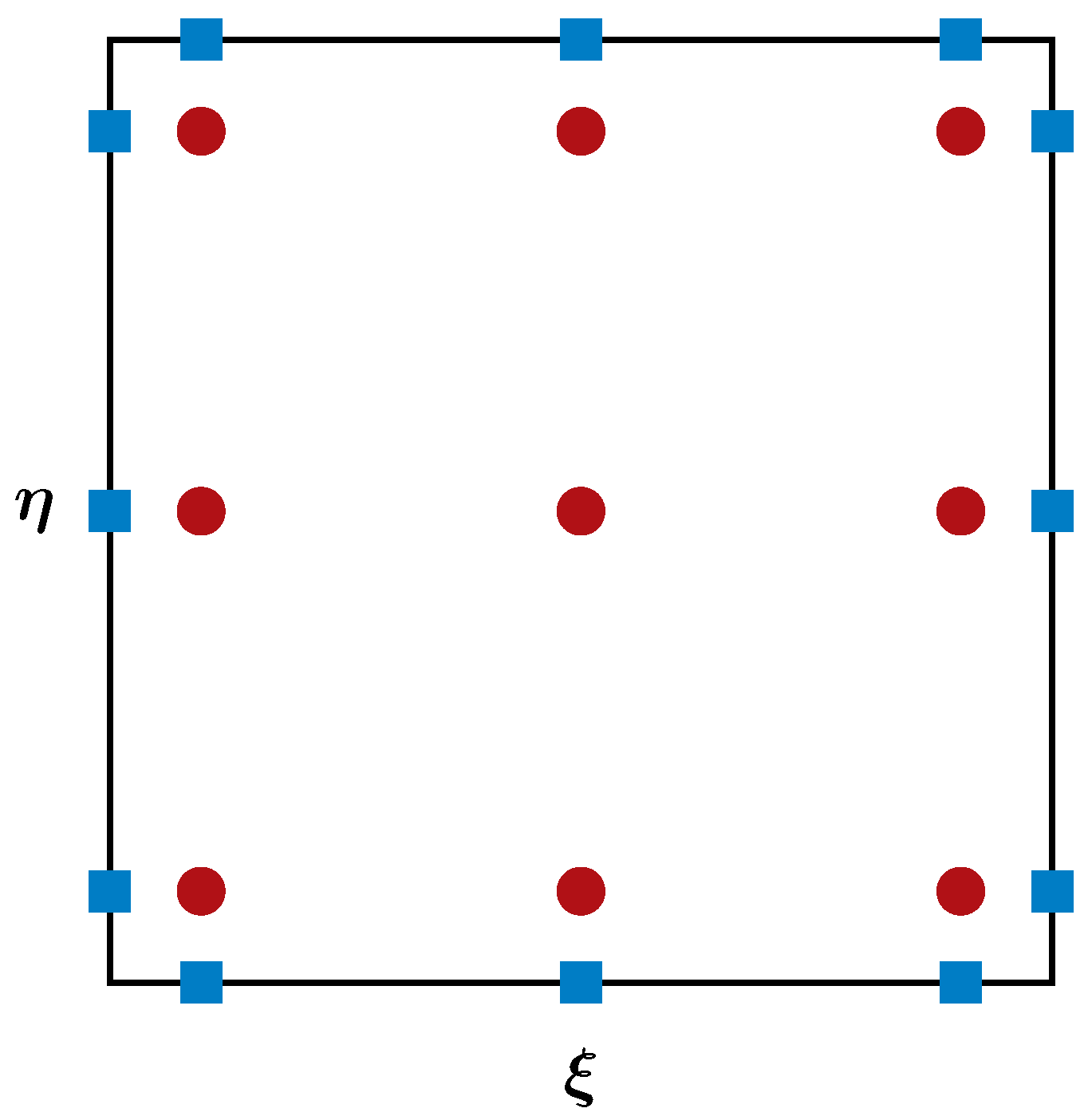Flux Reconstruction Method
The FR method further improves the efficiency of the SD method by collocating the SPs and FPs in the interior of a computational element. The figure below sketches the distribution of the SPs (red dots) and FPs (bondary blue dots) for a third-order FR method.
 Similar to the SD method, the solution and flux polynomials are constructed using tensor products of the interpolation bases,
Due to the first-order spatial derivatives on the flux terms in the Navier-Stokes equations, the flux polynomials need to be at least one-degree higher than the solution polynomials to give the correct orders of accuracy. To achieve this goal, the above flux polynomials are reconstructed using higher-degree correction polynomials. For example, the reconstructed (corrected) flux polynomial in the -direction is,
where is the original flux, and are the common fluxes on the left and the right boundaries, and are the original discontinuous boundary fluxes, and are the left and the right correction polynomials. The correction functions must satisfy the following conditions to ensure continuity,
The user can define extra conditions to construct a correction polynomial. Once the fluxes are reconstructed, the remaining steps are essentially identical to those of the SD method.
Similar to the SD method, the solution and flux polynomials are constructed using tensor products of the interpolation bases,
Due to the first-order spatial derivatives on the flux terms in the Navier-Stokes equations, the flux polynomials need to be at least one-degree higher than the solution polynomials to give the correct orders of accuracy. To achieve this goal, the above flux polynomials are reconstructed using higher-degree correction polynomials. For example, the reconstructed (corrected) flux polynomial in the -direction is,
where is the original flux, and are the common fluxes on the left and the right boundaries, and are the original discontinuous boundary fluxes, and are the left and the right correction polynomials. The correction functions must satisfy the following conditions to ensure continuity,
The user can define extra conditions to construct a correction polynomial. Once the fluxes are reconstructed, the remaining steps are essentially identical to those of the SD method.